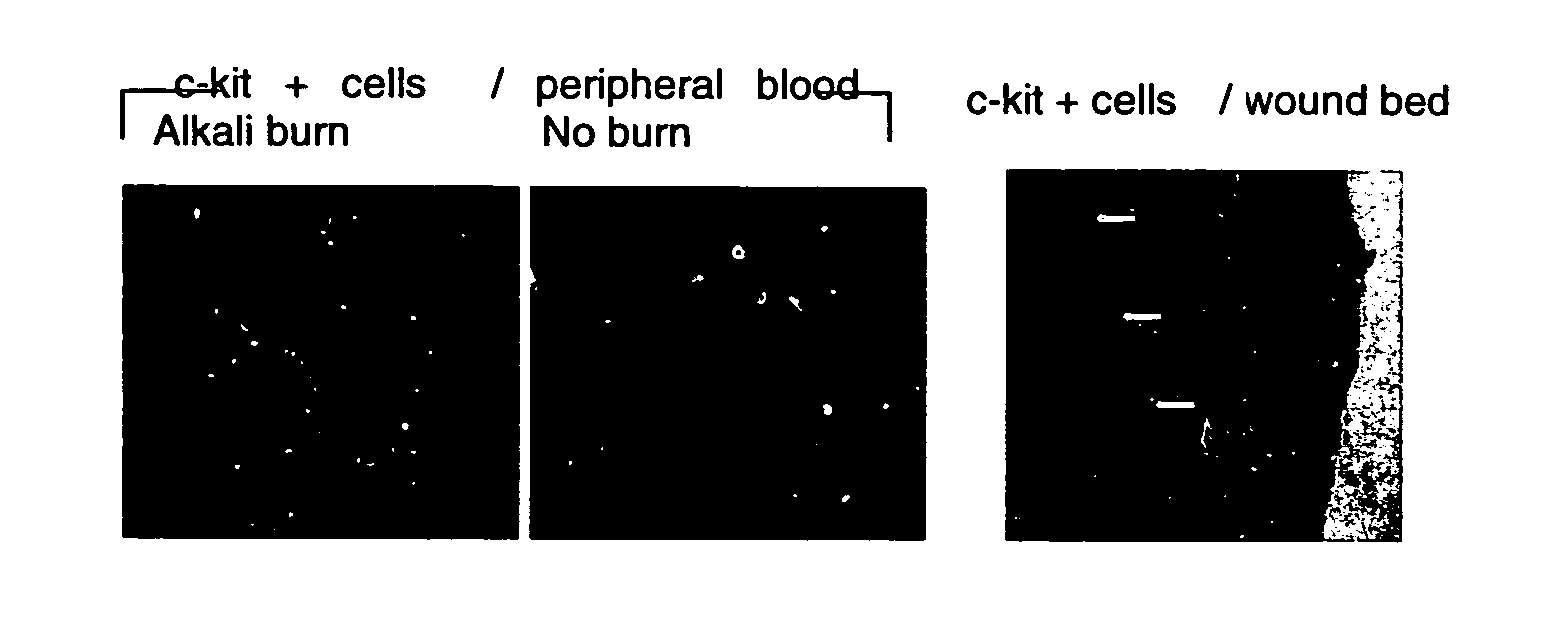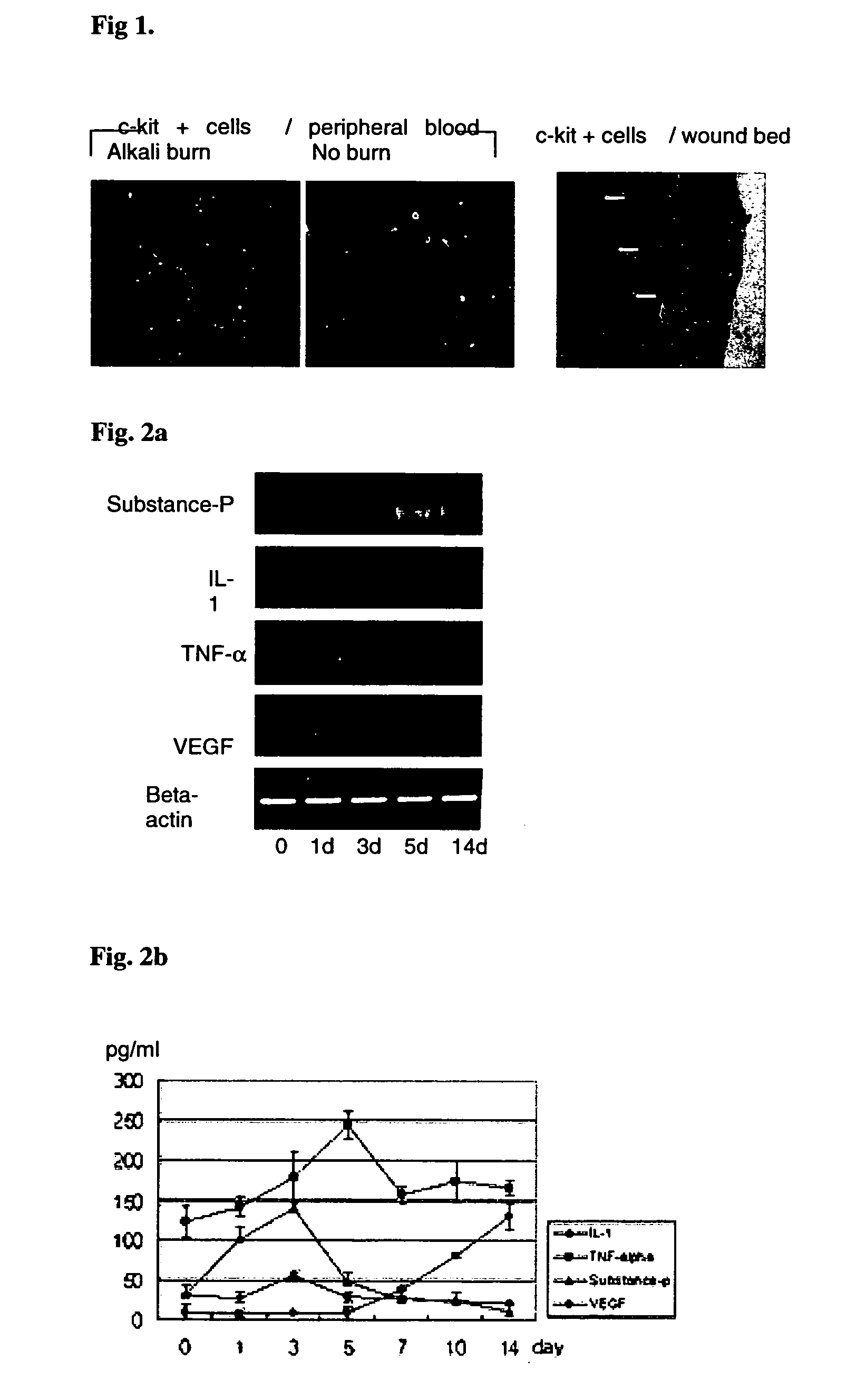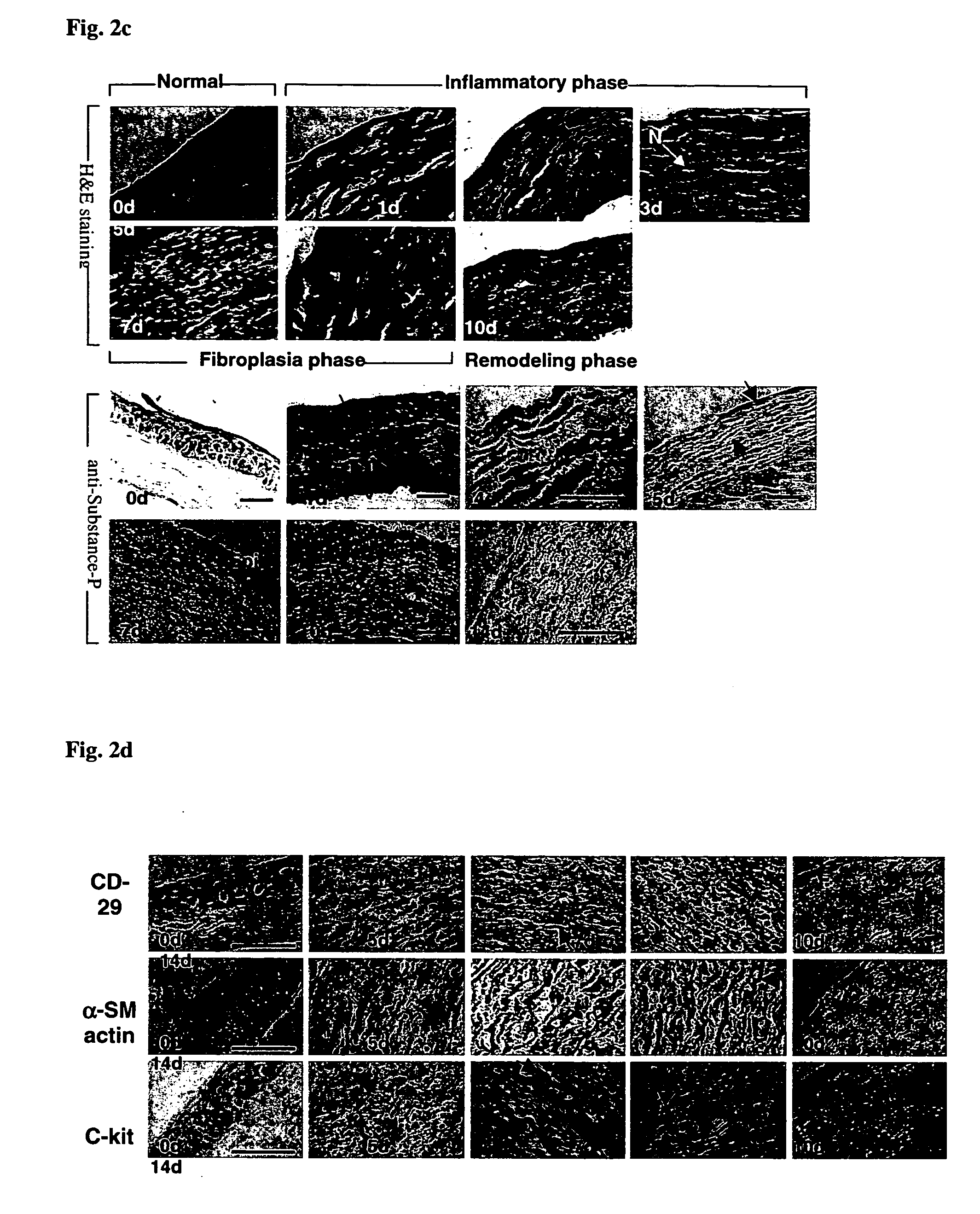Use of substance P for mobilization of Mesenchymal stem cells or proliferation of Mesenchymal stem cells and for wound healing or facilitating wound healing
a technology of mesenchymal stem cells and substance p, which is applied in the direction of drug compositions, skeletal/connective tissue cells, peptide/protein ingredients, etc., can solve the problems of delayed re-epithelialization, delayed healing, and unreported role of substance p in systemic msc mobilization and msc repopulation in bone marrow, so as to facilitate cornea wound healing, improve corneal transparency and visual recovery, and stimulate msc migration
- Summary
- Abstract
- Description
- Claims
- Application Information
AI Technical Summary
Benefits of technology
Problems solved by technology
Method used
Image
Examples
example 1
Identification of Elevation of C-Kit Positive Stem Cells in Peripheral Blood and their Supply to the Would Bed after Corneal Alkali Burn
[0058]New Zealand white rabbits weighing 2-3 kg were purchased from Samtako BioKorea. All these animal experiments were approved by Ethical Committee, Korea Institute of Radiological and Medical Sciences, and Chung-Ang University, and conducted in accordance with the ARVO Statement for the Use of Animal in Ophthalmic and Vision Research. For the alkali burn, the rabbit eyes were placed in contact with a 6 mm piece of circular Whatman filter paper soaked in 1N NaOH for 30 seconds. At 1, 3, 5, 7, 10 and 14 day after the alkali burn, rabbit eyes and whole blood were isolated. The smears of blood and cornea section were stained with Anti-C kit antibody, and this result was shown in FIG. 1.
[0059]Intact cornea is avascular tissue, and so extensive damage thereto might require vascular supply of inflammatory cells and other stem cells for the corneal repai...
example 2
Identification of Role of Substance-P as Wound Signaling Initiator Induced by Cornea Alkali Burn
[0060]Balb / c mice weighing 30-40 g were purchased from Jackson Lab (West Grove, Pa.). For the alkali burn, the mouse eyes were placed in contact with a 3 mm piece of circular Whatman filter paper soaked in 1N NaOH for 10 seconds. At 1, 3, 5, 7, 10, and 14 day after the alkali burn, the mouse eyes and whole blood were isolated.
[0061]Tissue damage itself may constitute a unique wound microenvironment to induce a systemic response such as inflammation and stem cell mobilization from the bone marrow to repair the damaged tissue. RT-PCR was used to analyze candidate factors retaining these functions in the wound microenvironment of alkali burned cornea. Specifically,
[0062]RNA was isolated from the alkali burned eye by Trizol (Invitrogen). Total 1 μg of RNA was reverse transcribed (RT) by using reverse transcription-polymerase kit (Takara), followed by PCR by using mouse gene-specific primers a...
example 3
Identification of Mobilization of MSCs from the Marrow into Peripheral Blood by Intravenous Injection of Substance-P
[0069]Substance-P was examined to determine whether it is responsible for stem cell mobilization into the blood stream or whether some other unidentified factors in the wound microenvironment are involved in stem cell mobilization.
[0070]In order to distinguish effects of the others factors in the wound microenvironment, Substance-P (0.1 nmole / g of body weight) (Calbiochem) was injected intravenously through tail vein in Balb-c mice without causing alkali burns to the eye, and then the whole blood was collected after 1 day. After removing red blood cells by percoll gradient centrifugation, the attached cells were cultured for 48 h in order to remove lymphocytes, and then, in order to distinguish MSCs from the lymphocytes, they were immune-stained with antibodies against CD-29 (β1 integrin) which is not expressed in the macrophages.
[0071]The result is shown in FIGS. 3a a...
PUM
| Property | Measurement | Unit |
|---|---|---|
| pore size | aaaaa | aaaaa |
| pH | aaaaa | aaaaa |
| pH | aaaaa | aaaaa |
Abstract
Description
Claims
Application Information
 Login to View More
Login to View More - R&D
- Intellectual Property
- Life Sciences
- Materials
- Tech Scout
- Unparalleled Data Quality
- Higher Quality Content
- 60% Fewer Hallucinations
Browse by: Latest US Patents, China's latest patents, Technical Efficacy Thesaurus, Application Domain, Technology Topic, Popular Technical Reports.
© 2025 PatSnap. All rights reserved.Legal|Privacy policy|Modern Slavery Act Transparency Statement|Sitemap|About US| Contact US: help@patsnap.com



